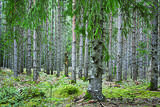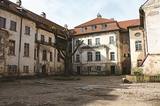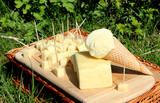| Нo | Название | Описание |
|---|---|---|
|
Казиньмежс – небольшой лесной массив на востоке от перекрестка дорог
Цирсте – Мазирбе и Колка – Вентспилс. Место преданий. Через Казиньмежс по доро-
ге Крустцельш доходим до перекрестка дороги Колка – Вентспилс (Р 124).
|
||
|
Varakļānu centrā, Rīgas ielas malā paceļas neliels paugurs, uz kura atrodas balta ēka ar 4 kolonnām un kupolveida jumtu, kas celta pēc Romas Panteona parauga. Kapela būvēta 1814. g. (arhitekts Vinčento Macoti), un tajā atrodas grāfu Borhu dzimtas apbedījumi. Kapelā bija novietoti arī Sv. Viktora pīšļi, kas pārvesti uz Varakļānu katoļu draudzes baznīcu. |
||
|
Это один из 6 маршрутов путешествий в серии «Насладитесь деревней!», который приглашает посетить «Дары села» – хозяйства и предприятия всевозможных видов и отраслей, которые открыты для посетителей и предлагают экскурсии, попробовать, осмотреть и приобрести свои изделия. Там можно увидеть домашних животных, современные сельские хозяйства, мастерские ремесленников, приобрести сельскохозяйственные продукты – хлеб, мед, домашнее вино и пиво, сыр, ягоды, фрукты, рыбу, мясо, овощи, чаи и другие, выращенные в деревне дары. По дороге можно отобедать в сельских корчмах. Примерное время прохождения маршрута: два - три дней, в зависимости от количества выбранных достопримечательностей и времени, отведенного для их осмотра. |
||
|
The highest and most beautiful wall of cliffs on Saaremaa Island (up to 21 m high), stretching along some 3 km. During strong winds from the W or NW, a part of the cliff is washed by the waves of the sea. The open face of the cliff has limestone, marls and dolomite, and there is a wealth of fossils at the base of the cliff – corals, stromatoporids, etc.
|
||
|
В северной части Лигатне - Гауясмале расположена единственная и функционирующая в наши дни переправа через Гаую и единственная переправа в Балтии, работающая на силе течения. Переправа - транспортное средство местного масштаба. |
||
|
Atrodas iepretim bākai. Saukta arī par Pizes (Miķeļtorņa lībiskais nosaukums) baznīcu. To uzcēla 1893. g. Padomju laikā ēkā bija izvietots pionieru nometnes klubs. Tagad tā atkal kalpo savam pamatmērķim. |
||
|
Nacionālā parka dienvidrietumdaļā jūrā iestiepjas Eldas pussala – skaists un ļoti omaļš ar kadiķu mežu (alvāriem) noaudzis zemes pleķītis ar interesantu jūras krastu, kur atsedzas silūra perioda nogulumieži. No pussalas gala, kurā slejas vecs Padomju armijas robežsargu tornis (apmeklējumam bīstams!), paveras visaptverošs skats uz Vilsandi salu (atpazīstama pēc bākas), Lonalaidas salu (Loonalaid) – otru lielāko Vilsandi arhipelāgā, Salavu (Salava) un citām mazākām saliņām. Dabas mīļotāji var uzmeklēt Eldas klinti (Elda pank) – ~ 2 m augstu un 0,4 km garu atsegumu, kura piekājē var atrast interesantas ūdens izskalotas fosilijas. |
||
|
(1735 г.). Находится на левом берегу реки Вента за старинным кирпичным мостом по адресу ул. Пилс 4. Строительным материалом послужили камни от разрушенного герцогского дворца, а сам домик был построен на террасе, которая является последним сохранившимся фрагментом замковой стены. Сторожку (именуемую также Домик Палача) перестроили в 19 веке. Сторожку можно осмотреть снаружи. |
||
|
В саду можно осмотреть множество экзотических и редких видов растений, цветов и деревьев. |
||
|
Предприятие по разведению породистых овец ООО «Мукайтас» – семейное предприятие, основанное в 2005 году. Миссия предприятия – предлагать мясопроизводственным стадам племенной материал, который дает быстрорастущих ягнят с отличными мясными качествами. В хозяйстве разводят овец породы Oxforddown. В хозяйстве можно приобрести породистых ярочек разного возраста, племенных овец и баранов, пряжу, изделия из шерсти, обработанные шкуры овец, овец для стравливания травы, баранину и разные мясные изделия. |
||
|
Находится на берегу древней долины Аматы. Здание построено из натуральных материалов - местных доломитовых блоков. Предлагают экологически чистую еду, выращенный на биогумусе картофель, лесные ягоды и грибы, деревенские продукты и зелень из собственного сада. Латышская кухня: Жареная и приготовленная на гриле форель, говяжий стейк, соус из боровиков и лисичек. Особое блюдо: Эглайнское воздушное пирожное из деревенских яиц и пирожное с орехами пекан с мороженым. |
||
|
В свое время дундагский барон был одним из крупнейших землевладельцев в Курземе, поэтому во второй половине XIX века вокруг господской усадьбы образовался центр хозяйственной и общественной жизни. Доминантой центральной площади Дундаги была водонапорная башня, за которой начинается Дактерлея, где с 1844 по 1854 гг. в докторате работал один из первых врачей латышской национальности и языковед Я. Барс. Вплоть до 60 годов XX столетия из Дундаги в Вентспилс через Мазирбе и рыбацкие поселки курсировал паровозик. Сегодняшняя Дундага привлекает туристов своим впечатляющим дворцом, лютеранской церковью, скульптурой Крокодила, мастерской керамиста Эйзенберги и другими объектами. |
||
|
Сведения о принятии ливами православия содержались в документе, найденном во время реставрационных работ (девяностые годы прошлого столетия) на колокольне Колкской лютеранской церкви (см. далее), который находился здесь с момента строительства храма - 1885 года. В документе сообщалось, что переход ливов в православие или в так называемую царскую веру «не связан с вероисповеданием, но это служит средством, как получить земельное преимущество или наслаждение». Православный приход в 1885 году приобретает землю от барона Остен - Сакена. На ней в 1890 году строится церковь, дом священника и здание школы. Все строения сохранились до наших дней. Церковь имеет свой приход, и богослужения проводятся раз в месяц. Имеются сведения, что Колка – это единственный прибрежный поселок ливов, где в девяностых годах XIX века построили православную церковь. Церковный колокол занял свое место в 1936 году. В советское время церковь использовали как часовню, а в наши дни она играет свою первоначальную роль. |
||
|
Находится на улице Латгалес, д. 88Б. На этом месте в 1685 году на средства Краковского воеводы Белинского была построена деревянная церковь, которая восстанавливалась в 1749 году, а в 1887 г. во время грозы сгорела. Год спустя началось строительство нового костела в двумя башнями (готический стиль). Костел освятили в 1904 году. Он остается одним из самых впечатляющих храмов Латвии. Внимание следует обратить на витражи с изображениями Святого Мейнарда и Святого Альберта. |
||
|
Болото Бажу – самое большое болото в Слитерском национальном парке –
зона строгого режима, нахождение в которой запрещено.
|
||
|
Кафе на летней террасе, которое находится на пляже пруда Прейльского парка, предлагает 100% натуральное домашнее мороженое с ягодами. На месте пекут свежие блины «Пампукас». Кафе работает только во время сезона со Дня матери (8-е мая) до Дня отца (11-е сентября). Для туристических групп предлагаются экскурсии и дегустация мороженого с сыром. |
||
|
Piedāvā ļoti gardus Lietuviešu tradicionālos ēdienus. Var pieņemt līdz 80 personām. Pieņem bankas kartes, ir āra terase un dzīvā mūzika. Pieejama autostāvvieta. |
||
|
Хозяин предлагает экскурсию по пчелиной пасеке в шапках для пасечников. Знакомит с процессом производства меда, демонстрирует видео и угощает 6 – 7 видами разного меда. Если гости пожелают, пожарит блины. Приобретение продукции. |
||
|
Небольшой населенный пункт на берегах Даугавы между Айзкраукле и Яунелгавой. Окрестности Скривери связаны с жизнью и работами популярного латышского писателя А.Упитиса. Недалеко от Скривери находится старейший в Латвии дендрарий. К его созданию в 1891 году приступил хозяин Скриверского поместья Максимильян фон Сиверс. Дендрологический спектр парка насчитывает около 400 пород, сортов и форм растений. Один из великолепнейших видов на Даугаву открывается с гор Крауклю – с верхней части крутого правого коренного берега Даугавы, являющимся древним городищем. |
||
|
Opposite the tower of the Church of the Holy Trinity, the monument was designed by Arta Dumpe and commemorates Latvia’s first president, Jānis Čakste (1859-1927). It was consecrated on November 14, 2003, precisely 81 years after the statesman was elected to the important position. |
||


















